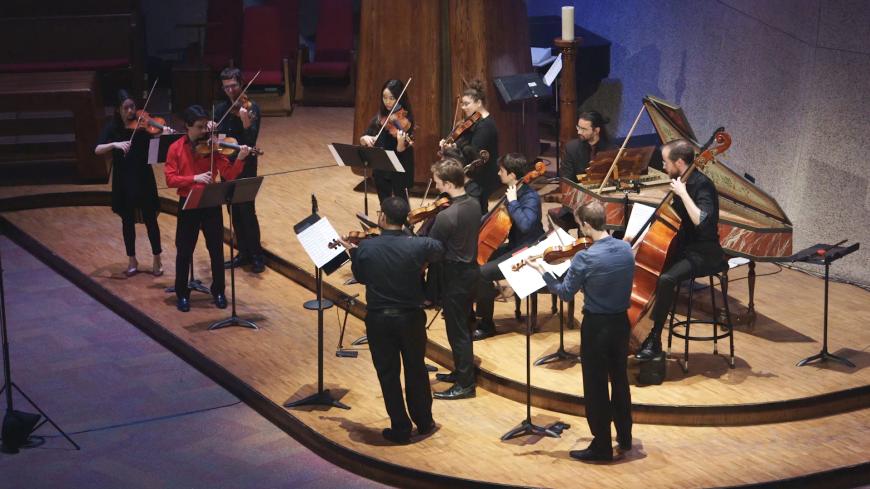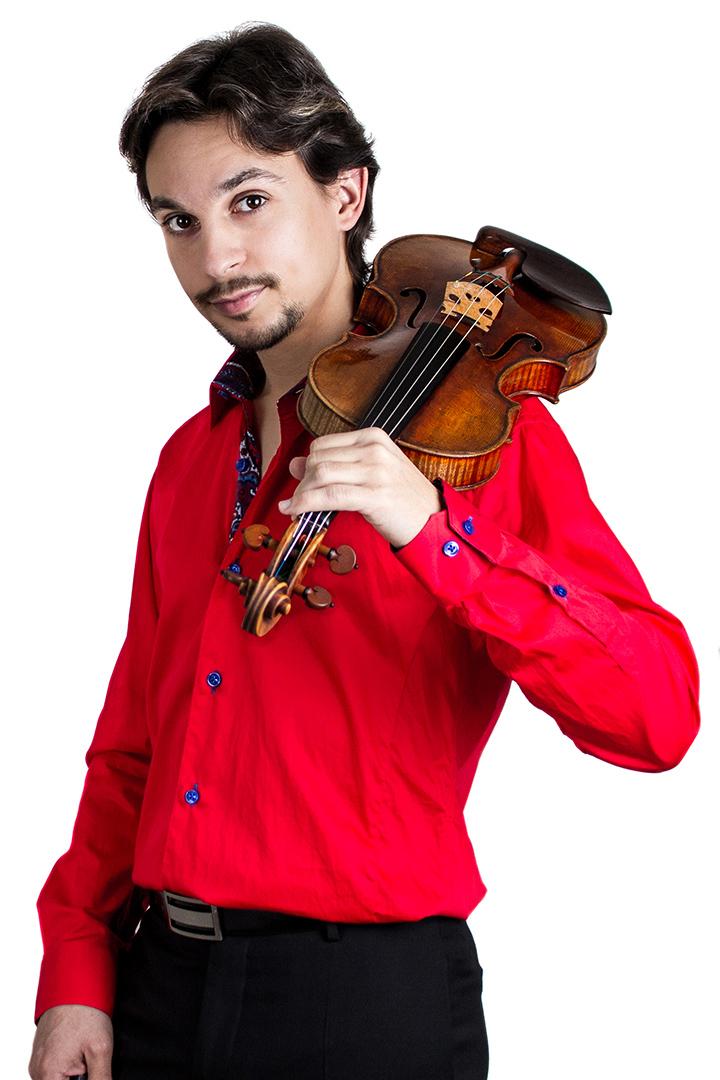
On Sunday afternoon, 12 musicians in colorful attire strutted onstage and plunged into a rather punk rock rendition of Aaron Copland’s “Hoe-Down.” Violinists stomped their feet (typically an orchestra no-no), cellists headbanged their way through descending bass lines, and someone shouted “yeehaw” from the stage, causing the audience to erupt in laughter.
They have chops, and they have spirit, but Delirium Musicum’s (DM) biggest asset in concert last Sunday was the rapport the players built with the audience. The self-led chamber orchestra, helmed by Artistic Director/first violinist Etienne Gara, presented an energetic program of classics with a twist at First Presbyterian Church of Santa Monica following its previous night on the other side of town (at Pasadena City College).

Gara, wearing a bright red shirt, introduced each piece from the stage and offered anecdotes, jokes, and even a quick technical demonstration (thanks to violist Chieh-Fan Yiu) to prepare us for one of the works. “It’s a two-way street,” Gara explained, thanking the audience for its good energy and citing the difficulty of performing to empty spaces on Zoom without human contact. I liked these chatty interstitials, which offered a way into the ensemble’s thought process. The performances were polished, but Gara made it clear that the group welcomed audience feedback, nonetheless.
The highlights of the concert were two pieces written nearly three centuries apart — Antonio Vivaldi’s Concerto for Two Violins in A Minor, RV 522 (1711) and Gabriela Lena Frank’s Leyendas: An Andean Walkabout (2001).
The Vivaldi isn’t a terribly interesting work, but soloists Gara and YuEun Kim made it feel like a dance. Gara introduced the piece by teasing the fact that he and Kim have very different playing styles “and are very different people.” From center stage, the two of them led the orchestra with lightly choreographed gestures, alternately duking it out and supporting each other in the solo passages, exchanging smirks and smiles along the way. Kim plays with precise power, while Gara is a risk-taker; both are fiery. Nathan Ben-Yehuda, playing the “harpsichord” continuo on a bright red Nord digital piano, added an amusing touch to the modern Baroque affair.
Leyendas was a crowd-pleaser. The piece is a stunning string showcase that mixes elements of Western classical and Andean folk music traditions in six innovative movements. DM, who played movements 1–4 and 6, established distinct timbral soundscapes and gave a dynamic performance that excelled in raucous, schmaltzy, and meditative moments alike. The audience was so excited after the “Chasqui” movement (depicting a legendary sprinter-messenger of the Incas) that the ensemble had to pause and acknowledge applause before continuing with the final, flirtatious “Coqueteos” movement.
Leyendas, more than any other piece on the program, really showed off the ensemble’s technical and emotional range, and the players’ excitement for the piece (probably the least-known one on the program) was infectious.
It makes sense for a chamber orchestra to dip into string quartet literature, but these augmented arrangements rarely sound good. Sure enough, DM’s 12-person rendition of Schubert’s “Death and the Maiden” felt muddy and unbalanced. The inner voices were difficult to hear, the violins were overpowered by a wash of sound, and it was nearly impossible to hear any fine articulation work that was happening on an individual or section level. With this beefed-up arrangement, we missed out on hearing some of the more refined, spontaneous parts — a problem that DM attempted to tame by stripping some of the first violin parts down to solos. “Death and the Maiden” — which Gara accurately called “one of the holy grails of quartets” — is better left as such.
Jonny Greenwood’s Prospector’s Quartet suffered a similar fate, sounding heavier and blockier than it does on the There Will Be Blood soundtrack.
Other pieces on the program included Jörg Widmann’s 180 Beats per Minute and resident composer Gianluca Bersanetti’s arrangement of J.S. Bach’s Prelude in C Minor, BWV 847, both of which were short and sweet but difficult to clearly hear in the abundantly reverberating venue.
After a standing ovation, the ensemble played an adrenaline-fueled encore from the “Summer” section of Recomposed by Max Richter: Vivaldi — The Four Seasons. Gara’s solo violin line soared over the intensifying arpeggios of the orchestra, only to end on a cliffhanger.


